Volume 34
Displaying 1-24 of 24 articles from this issue
- |<
- <
- 1
- >
- >|
-
Article type: Cover
2009Volume 34 Pages Cover1-
Published: March 31, 2009
Released on J-STAGE: April 22, 2017
Download PDF (14272K) -
Article type: Appendix
2009Volume 34 Pages App1-
Published: March 31, 2009
Released on J-STAGE: April 22, 2017
Download PDF (11K) -
Article type: Index
2009Volume 34 Pages Toc1-
Published: March 31, 2009
Released on J-STAGE: April 22, 2017
Download PDF (57K) -
Article type: Article
2009Volume 34 Pages 1-12
Published: March 31, 2009
Released on J-STAGE: April 22, 2017
Download PDF (1571K) -
Article type: Article
2009Volume 34 Pages 13-24
Published: March 31, 2009
Released on J-STAGE: April 22, 2017
Download PDF (1493K) -
Article type: Article
2009Volume 34 Pages 25-36
Published: March 31, 2009
Released on J-STAGE: April 22, 2017
Download PDF (1600K) -
Article type: Article
2009Volume 34 Pages 37-48
Published: March 31, 2009
Released on J-STAGE: April 22, 2017
Download PDF (1691K) -
Article type: Article
2009Volume 34 Pages 49-60
Published: March 31, 2009
Released on J-STAGE: April 22, 2017
Download PDF (1540K) -
Article type: Article
2009Volume 34 Pages 61-72
Published: March 31, 2009
Released on J-STAGE: April 22, 2017
Download PDF (1479K) -
Article type: Article
2009Volume 34 Pages 73-84
Published: March 31, 2009
Released on J-STAGE: April 22, 2017
Download PDF (1581K) -
Article type: Article
2009Volume 34 Pages 85-96
Published: March 31, 2009
Released on J-STAGE: April 22, 2017
Download PDF (1562K) -
Article type: Appendix
2009Volume 34 Pages App2-
Published: March 31, 2009
Released on J-STAGE: April 22, 2017
Download PDF (7K) -
Article type: Article
2009Volume 34 Pages 97-99
Published: March 31, 2009
Released on J-STAGE: April 22, 2017
Download PDF (467K) -
Article type: Article
2009Volume 34 Pages 99-101
Published: March 31, 2009
Released on J-STAGE: April 22, 2017
Download PDF (455K) -
Article type: Article
2009Volume 34 Pages 101-102
Published: March 31, 2009
Released on J-STAGE: April 22, 2017
Download PDF (306K) -
Article type: Article
2009Volume 34 Pages 103-105
Published: March 31, 2009
Released on J-STAGE: April 22, 2017
Download PDF (427K) -
Article type: Appendix
2009Volume 34 Pages App3-
Published: March 31, 2009
Released on J-STAGE: April 22, 2017
Download PDF (7K) -
Article type: Article
2009Volume 34 Pages 107-108
Published: March 31, 2009
Released on J-STAGE: April 22, 2017
Download PDF (354K) -
Article type: Article
2009Volume 34 Pages 108-109
Published: March 31, 2009
Released on J-STAGE: April 22, 2017
Download PDF (338K) -
Article type: Article
2009Volume 34 Pages 109-110
Published: March 31, 2009
Released on J-STAGE: April 22, 2017
Download PDF (331K) -
Article type: Article
2009Volume 34 Pages 110-111
Published: March 31, 2009
Released on J-STAGE: April 22, 2017
Download PDF (258K) -
Article type: Appendix
2009Volume 34 Pages App4-
Published: March 31, 2009
Released on J-STAGE: April 22, 2017
Download PDF (17K) -
Article type: Cover
2009Volume 34 Pages Cover2-
Published: March 31, 2009
Released on J-STAGE: April 22, 2017
Download PDF (49K) -
Article type: Cover
2009Volume 34 Pages Cover3-
Published: March 31, 2009
Released on J-STAGE: April 22, 2017
Download PDF (49K)
- |<
- <
- 1
- >
- >|
